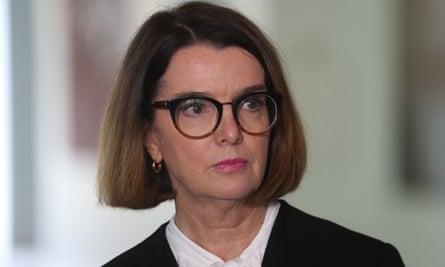Extract from The Guardian
Social services minister Anne Ruston says government sees no need for ‘narrow definition of poverty’

Last modified on Wed 28 Oct 2020 19.43 AEDT
Australia does not need an official poverty measure because its welfare system is “comprehensive” and “targeted”, according to the social services minister.
At a Senate estimates hearing on Wednesday, Anne Ruston faced questions about the government’s plans for the permanent rate of the jobseeker payment, temporarily set at $815 a fortnight, up from the pre-pandemic level of $565.
Ruston gave her strongest indication that the supplement would be extended beyond 1 January, although it was unlikely the government would announce a permanent increase before the end of the year.
Quizzed about the role of poverty measurements in setting welfare payments, department officials suggested they were generally “very theoretical” or “academic”.
And in an exchange with Labor’s Katy Gallagher, Ruston dismissed the need for an agreed way to measure poverty.
“The government doesn’t have a measure of poverty, which has been the practice of successive governments, because our payments system is very comprehensive and specifically targeted towards providing the policy outcomes that are defined by the particular [support] measures,” Ruston said.
“The suite of determining factors in those particular payments is specific to those payments.
“A narrow definition of ‘poverty’, as I said, is not something the government has ever sought, doesn’t have.”
Asked by Gallagher whether people should receive payments that left them in “poverty”, Ruston replied: “You’re returning to the word poverty again.
“But what I would say is that income support payments are put in place as a safety net to assist people.”
Kathryn Campbell, secretary of the social services department, said officials did not “frame” advice on the adequacy of welfare payments based on measures of poverty.
“It’s about what does the word poverty mean and it’s about how much income, how much support is provided to people,” Campbell said.
“What are their expenses versus their support base. Those are the issues. We haven’t provided advice about a definition of poverty.”
Campbell said the Productivity Commission had found there was no one indicator of poverty that was relevant in an Australian context.
Ruston declined to answer when asked whether payments were adequate for a dignified life or whether people on welfare lived in poverty.
“I can see why you run a mile from having a definition of poverty,” Gallagher said. “You don’t have to deal with the issue of adequacy then.”
Asked by Greens senator Rachel Siewert how she would describe the lives of people on welfare, Ruston said: “I am not disputing the fact that living without a job is not a desirable situation to find yourself in.”
Siewart said: “Just because you haven’t got a definition doesn’t mean people aren’t living in poverty.”
Until the $550 coronavirus supplement, the base rate of jobseeker payment – $280 a week – was well below commonly used relative poverty measures. It fell back below this line when the supplement was reduced to $250.
Australian researchers generally use the relative poverty measure of 50% of median income, set at $457 a week for a single adult living alone or $960 a week for a couple with two children. Using that measure, Acoss and the UNSW said this year there were 3.24m people living in poverty.
There is also the Henderson poverty line, which emerged from a 1973 inquiry of the same name, and is set at a higher level of about about $550 a week for single people.
While poverty measures are the subject of debate, other OECD countries have adopted an agreed poverty line and the Australian government has been urged to do the same.
The US adopted a poverty measure during its “war on poverty” in the 1960s, though it has been criticised as outdated. The Canadian government has an official legislated poverty line, and the UK produces poverty statistics.
Amid Jacinda Ardern’s crusade against child poverty, New Zealand’s statistics agency publishes child poverty statistics after legislation passed in 2018.
Fresh debate about a poverty measure came as the social services department confirmed it expected about 1.8m people to be receiving jobseeker payments at Christmas.
That was an increase of about 300,000 on July forecasts, which officials attributed in part to the second wave in Victoria and an expected influx of people from jobkeeper payments on to welfare.
Though describing the situation as “volatile”, officials forecast 1.3m on payments in 2021-22, falling to 1m in 2022-23 and 900,000 in 2023-24.
Labor said there were 813,000 on the equivalent payments in December 2019.
There are about 1.4m on jobseeker and youth allowance (other).
Asked multiple times about the possibility of a permanent increase to jobseeker, Ruston emphasised the government’s priority was setting further temporary supports through the coronavirus supplement.
“There is very likely to be continued elevated levels of support recognising we are still in a pandemic and we still don’t know when and where this pandemic is going to end,” she said.
An announcement is expected in December.
No comments:
Post a Comment